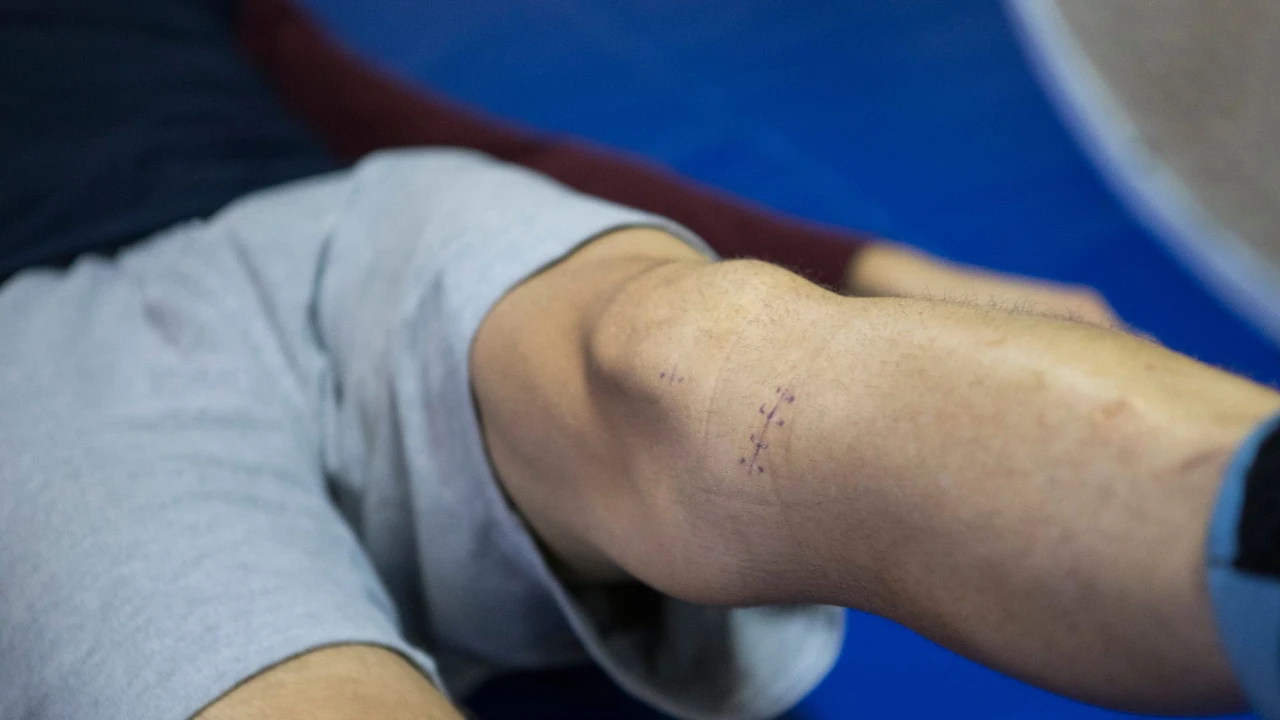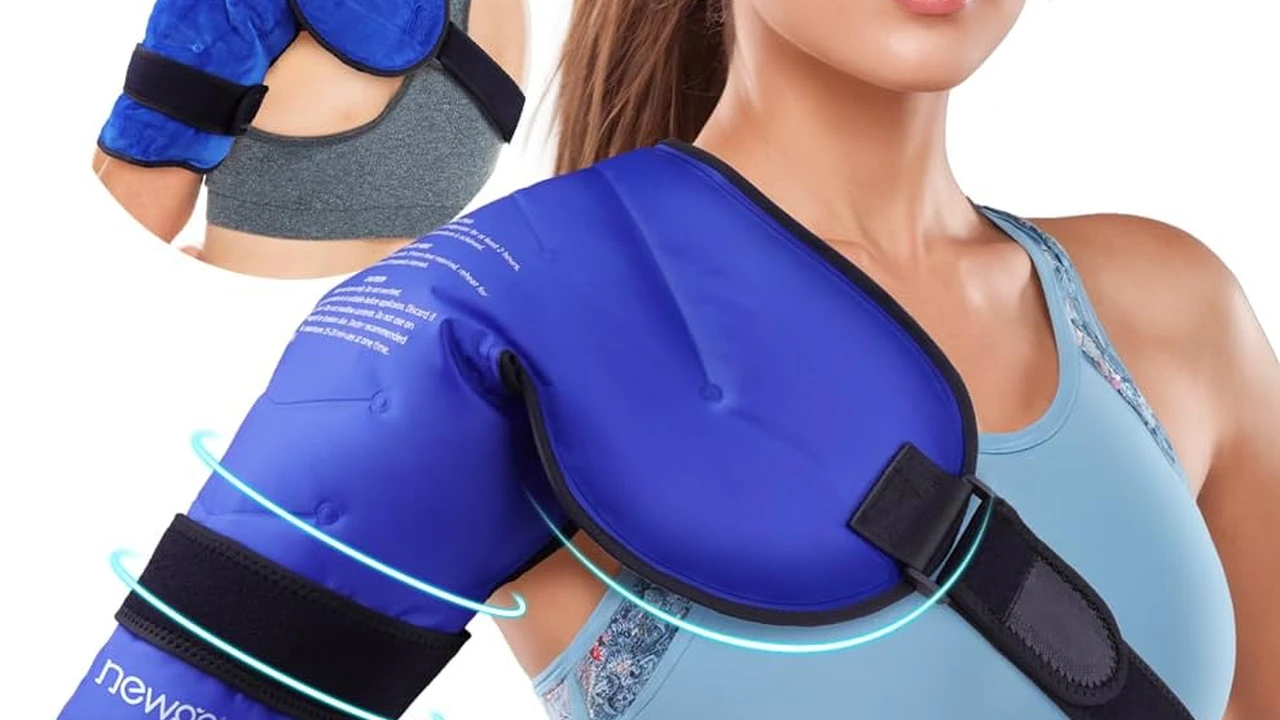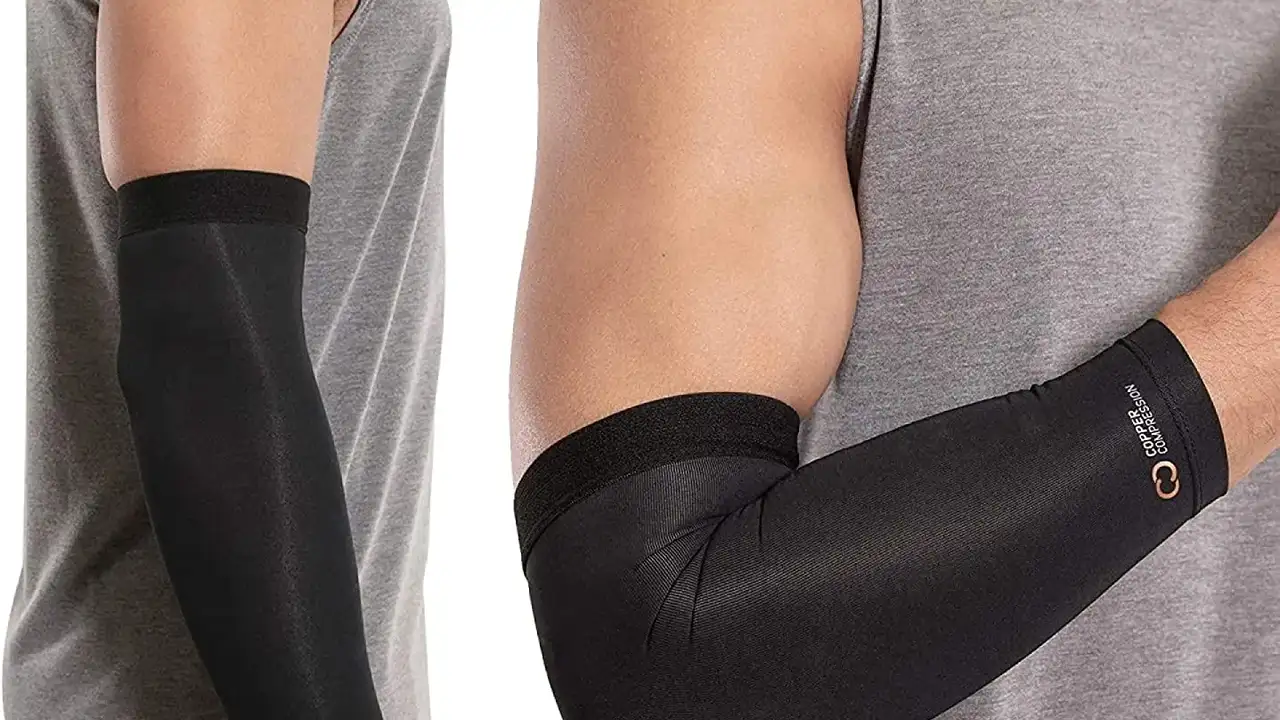5 Common Mistakes to Avoid During Knee Injury Recovery

Introduction to Knee Injuries A Pervasive Problem
Knee injuries are a common ailment affecting people of all ages and activity levels. Whether you're an elite athlete, a weekend warrior, or simply going about your daily life, a sudden twist, fall, or repetitive strain can lead to a knee injury. Understanding the different types of knee injuries, their causes, and the appropriate recovery strategies is crucial for regaining mobility and preventing long-term complications. This comprehensive guide delves into the intricacies of knee injuries, providing insights into diagnosis, treatment, rehabilitation, and preventative measures. We'll explore common conditions like ACL tears, meniscus injuries, patellar dislocations, and osteoarthritis, offering practical advice and actionable steps to help you navigate the recovery process.
Anatomy of the Knee A Foundation for Understanding Injuries
To truly understand knee injuries, it's essential to have a basic grasp of the knee's anatomy. The knee joint is a complex structure comprised of bones, ligaments, tendons, and cartilage, all working together to provide stability and mobility. The femur (thigh bone) and tibia (shin bone) form the main articulation of the knee, while the patella (kneecap) sits in front, providing protection and leverage. The ligaments, including the anterior cruciate ligament (ACL), posterior cruciate ligament (PCL), medial collateral ligament (MCL), and lateral collateral ligament (LCL), provide stability by connecting the bones and preventing excessive movement. The menisci, two C-shaped pieces of cartilage, act as shock absorbers between the femur and tibia. Finally, tendons connect muscles to bones, allowing for movement. When any of these structures are damaged, a knee injury can occur.
Common Types of Knee Injuries Diagnosing the Problem
Knee injuries can manifest in various forms, each with its unique characteristics and treatment approaches. Some of the most common types include:
- ACL Tears: Often caused by sudden stops, twists, or direct blows to the knee, ACL tears are prevalent in athletes involved in sports like soccer, basketball, and skiing. Symptoms include a popping sensation, immediate pain, swelling, and instability.
- Meniscus Injuries: These injuries often occur due to twisting or pivoting motions, particularly when the knee is bearing weight. Symptoms can include pain, swelling, stiffness, catching or locking of the knee, and difficulty straightening the leg.
- Patellar Dislocations: This occurs when the kneecap slips out of its groove, usually due to a direct blow or sudden twisting motion. Symptoms include pain, swelling, visible deformity, and instability.
- Osteoarthritis: A degenerative joint disease that affects the cartilage in the knee, leading to pain, stiffness, swelling, and decreased range of motion. It's more common in older adults and can be exacerbated by previous injuries or overuse.
- Patellar Tendonitis (Jumper's Knee): An inflammation of the patellar tendon, which connects the kneecap to the shinbone. It's common in athletes who participate in jumping sports like basketball and volleyball.
- Iliotibial (IT) Band Syndrome: An overuse injury that affects the iliotibial band, a thick band of tissue that runs along the outside of the thigh from the hip to the knee. It causes pain on the outside of the knee, especially during running.
Diagnosing Knee Injuries A Multifaceted Approach
Accurate diagnosis is crucial for effective treatment of knee injuries. Doctors typically employ a combination of methods, including:
- Physical Examination: Assessing range of motion, stability, and pain points. Specific tests like the Lachman test (for ACL tears) and McMurray test (for meniscus injuries) can help identify the injured structure.
- Imaging Tests: X-rays can reveal fractures or signs of osteoarthritis. MRI (magnetic resonance imaging) provides detailed images of soft tissues, allowing for the detection of ligament tears, meniscus injuries, and cartilage damage.
- Arthroscopy: A minimally invasive surgical procedure where a small camera is inserted into the knee joint to visualize the structures and diagnose the problem directly.
Treatment Options for Knee Injuries A Spectrum of Approaches
The treatment approach for a knee injury depends on the type and severity of the injury, as well as the individual's age, activity level, and overall health. Treatment options can range from conservative measures to surgical interventions.
- RICE Protocol (Rest, Ice, Compression, Elevation): This is the cornerstone of initial treatment for many knee injuries. Rest allows the injured tissue to heal, ice reduces inflammation, compression provides support, and elevation helps minimize swelling.
- Pain Management: Over-the-counter pain relievers like ibuprofen or naproxen can help alleviate pain and inflammation. In some cases, stronger prescription pain medications may be necessary.
- Physical Therapy: A crucial component of recovery, physical therapy focuses on strengthening the muscles around the knee, improving range of motion, and restoring stability. Exercises may include quadriceps strengthening, hamstring strengthening, calf raises, and balance exercises.
- Bracing: Knee braces can provide support and stability, particularly for ligament injuries. Hinged braces are often used for ACL tears, while sleeve braces can provide compression and support for minor injuries.
- Injections: Corticosteroid injections can reduce inflammation and pain, but they are typically used sparingly due to potential side effects. Hyaluronic acid injections can lubricate the joint and reduce pain in patients with osteoarthritis.
- Surgery: Surgery may be necessary for severe ligament tears, meniscus injuries that don't heal with conservative treatment, or advanced osteoarthritis. Common surgical procedures include ACL reconstruction, meniscus repair, and knee replacement.
Rehabilitation After Knee Injuries A Gradual Return to Activity
Rehabilitation is a critical phase of recovery after a knee injury, whether it's treated conservatively or surgically. The goal of rehabilitation is to restore full function to the knee, allowing you to return to your desired activities. A well-structured rehabilitation program typically involves several phases:
- Phase 1: Pain and Swelling Control: Focuses on reducing pain and swelling using the RICE protocol and gentle range-of-motion exercises.
- Phase 2: Range of Motion and Muscle Strengthening: Gradually increasing range of motion and strengthening the muscles around the knee. Exercises may include hamstring curls, leg extensions, and calf raises.
- Phase 3: Functional Exercises: Performing exercises that mimic the movements required for your specific activities, such as squats, lunges, and step-ups.
- Phase 4: Return to Activity: Gradually increasing the intensity and duration of your activities, with a focus on proper technique and injury prevention.
Preventing Knee Injuries Proactive Strategies for a Healthy Knee
Preventing knee injuries is always better than treating them. Several strategies can help reduce your risk of knee injuries:
- Proper Warm-up and Stretching: Warming up before exercise increases blood flow to the muscles and prepares them for activity. Stretching improves flexibility and range of motion.
- Strength Training: Strengthening the muscles around the knee, particularly the quadriceps, hamstrings, and calves, provides support and stability.
- Proper Technique: Using proper technique during sports and other activities reduces the risk of injury. Consider working with a coach or trainer to improve your technique.
- Appropriate Footwear: Wearing shoes that provide good support and cushioning can help prevent knee injuries, especially during high-impact activities.
- Gradual Progression: Gradually increasing the intensity and duration of your activities allows your body to adapt and reduces the risk of overuse injuries.
- Listen to Your Body: Pay attention to pain and discomfort, and avoid pushing yourself too hard, especially when you're tired or fatigued.
Specific Product Recommendations for Knee Injury Recovery and Prevention
Several products can aid in knee injury recovery and prevention. Here are some specific recommendations, including use cases, product comparisons, and detailed information:
Knee Braces A Support System for Recovery
Knee braces provide support, stability, and pain relief for various knee injuries. They come in different types, each designed for specific purposes.
DonJoy Playmaker II Knee Brace
Use Case: Ideal for athletes recovering from mild to moderate ligament sprains or meniscus tears. Provides excellent support during sports activities.
Description: The DonJoy Playmaker II is a comfortable and durable knee brace designed for active individuals. It features a breathable fabric and a low-profile design, making it comfortable to wear during sports activities. The brace provides excellent medial-lateral support, helping to stabilize the knee and prevent further injury. It's suitable for a range of activities, including running, basketball, and volleyball.
Product Comparison: Compared to other hinged knee braces like the Breg Roadrunner, the DonJoy Playmaker II offers a more comfortable and breathable design. While the Breg Roadrunner is more robust and provides slightly more support, the Playmaker II is a better choice for those prioritizing comfort and mobility.
Detailed Information:
- Pricing: Approximately $150 - $200
- Material: Breathable nylon fabric, aluminum hinges
- Sizes: Available in a wide range of sizes to fit most individuals
- Features: Hinged design for medial-lateral support, breathable fabric, low-profile design
McDavid Hinged Knee Brace
Use Case: Provides moderate support for ligament instability, meniscus injuries, and general knee pain during daily activities and light exercise.
Description: The McDavid Hinged Knee Brace is a versatile option for those seeking moderate support and pain relief. It features a polycentric hinge that allows for natural knee movement, and adjustable straps for a customized fit. The brace is made from neoprene, which provides warmth and compression, helping to reduce pain and swelling.
Product Comparison: Compared to the DonJoy Playmaker II, the McDavid Hinged Knee Brace offers a more affordable option with decent support. While the Playmaker II is designed for higher-impact activities, the McDavid brace is suitable for everyday use and light exercise.
Detailed Information:
- Pricing: Approximately $70 - $100
- Material: Neoprene, steel hinges
- Sizes: Available in a range of sizes to fit most individuals
- Features: Polycentric hinge for natural movement, adjustable straps, neoprene material for warmth and compression
Foam Rollers Muscle Recovery and Flexibility
Foam rollers are essential tools for muscle recovery and flexibility, helping to release tension and improve circulation around the knee.
TriggerPoint GRID Foam Roller
Use Case: Ideal for self-myofascial release, targeting tight muscles and trigger points around the knee, including the quadriceps, hamstrings, and calves.
Description: The TriggerPoint GRID Foam Roller is a popular choice among athletes and fitness enthusiasts. It features a unique grid pattern that mimics the feeling of a massage therapist's hands, allowing for targeted pressure and deep tissue release. The GRID foam roller is durable and lightweight, making it easy to transport and use anywhere.
Product Comparison: Compared to smooth foam rollers, the TriggerPoint GRID offers a more intense massage experience. While smooth foam rollers are gentler and suitable for beginners, the GRID is better for those seeking deeper tissue release and targeted pain relief.
Detailed Information:
- Pricing: Approximately $30 - $40
- Material: EVA foam
- Sizes: Available in various sizes, including 13-inch and 26-inch
- Features: GRID pattern for targeted massage, durable construction, lightweight design
OPTP PRO-Roller Soft Density Foam Roller
Use Case: Suitable for beginners or those with sensitive tissues, providing gentle muscle release and improved circulation around the knee.
Description: The OPTP PRO-Roller is a soft-density foam roller that provides gentle muscle release without causing excessive pain or discomfort. It's ideal for beginners or those with sensitive tissues. The PRO-Roller is made from closed-cell foam, which is durable and easy to clean.
Product Comparison: Compared to the TriggerPoint GRID, the OPTP PRO-Roller offers a gentler massage experience. While the GRID is better for deep tissue release, the PRO-Roller is a better choice for those seeking a more comfortable and less intense experience.
Detailed Information:
- Pricing: Approximately $25 - $35
- Material: Closed-cell foam
- Sizes: Available in various sizes, including 12-inch and 36-inch
- Features: Soft density for gentle massage, durable construction, closed-cell foam for easy cleaning
Ice Packs and Compression Sleeves Reducing Inflammation and Pain
Ice packs and compression sleeves are essential for reducing inflammation and pain after a knee injury. They help to constrict blood vessels, reducing swelling and promoting healing.
Mueller Reusable Ice Bag
Use Case: Provides targeted cold therapy to reduce pain and swelling after a knee injury. Can be used for various body parts, including the knee, ankle, and elbow.
Description: The Mueller Reusable Ice Bag is a simple and effective way to apply cold therapy to the knee. It features a wide mouth for easy filling and a leak-resistant design. The ice bag is reusable and can be easily cleaned.
Product Comparison: Compared to gel ice packs, the Mueller Reusable Ice Bag is more versatile and can be easily adjusted to fit the contours of the knee. While gel ice packs provide more consistent cooling, the ice bag is a more affordable and adaptable option.
Detailed Information:
- Pricing: Approximately $10 - $15
- Material: Durable fabric, leak-resistant design
- Sizes: Available in various sizes
- Features: Wide mouth for easy filling, leak-resistant design, reusable
CEP Compression Knee Sleeve
Use Case: Provides compression and support to the knee, helping to reduce swelling and improve circulation. Suitable for mild knee pain, arthritis, and post-exercise recovery.
Description: The CEP Compression Knee Sleeve is designed to provide graduated compression, which helps to improve blood flow and reduce swelling. The sleeve is made from a breathable fabric that wicks away moisture, keeping the knee cool and dry. It's suitable for a range of activities, including running, walking, and weightlifting.
Product Comparison: Compared to other compression sleeves, the CEP Compression Knee Sleeve offers a higher level of compression and a more durable construction. While other sleeves may be more affordable, the CEP sleeve provides superior support and performance.
Detailed Information:
- Pricing: Approximately $40 - $50
- Material: Nylon, spandex
- Sizes: Available in various sizes to fit most individuals
- Features: Graduated compression, breathable fabric, durable construction
Topical Pain Relievers Soothing Relief for Knee Pain
Topical pain relievers can provide temporary relief from knee pain, reducing inflammation and discomfort.
Biofreeze Pain Relief Gel
Use Case: Provides fast-acting pain relief for sore muscles, sprains, and arthritis. Can be applied directly to the knee for targeted relief.
Description: Biofreeze Pain Relief Gel is a popular choice for athletes and individuals seeking fast-acting pain relief. It contains menthol, which provides a cooling sensation that helps to reduce pain and inflammation. The gel is non-greasy and absorbs quickly into the skin.
Product Comparison: Compared to other topical pain relievers like Bengay, Biofreeze offers a stronger cooling sensation and a more pleasant scent. While Bengay provides warmth, Biofreeze provides a cooling effect that many find more effective for pain relief.
Detailed Information:
- Pricing: Approximately $10 - $15
- Ingredients: Menthol, water, alcohol
- Sizes: Available in various sizes, including 4 oz and 16 oz
- Features: Fast-acting pain relief, cooling sensation, non-greasy formula
Penetrex Pain Relief Cream
Use Case: Provides deep penetrating pain relief for chronic knee pain, arthritis, and nerve pain. Can be used daily to manage pain and improve mobility.
Description: Penetrex Pain Relief Cream is designed to provide deep penetrating pain relief for chronic conditions. It contains a blend of ingredients, including Arnica, Vitamin B6, and MSM, that work together to reduce inflammation and promote healing. The cream is non-greasy and absorbs quickly into the skin.
Product Comparison: Compared to Biofreeze, Penetrex offers a more comprehensive approach to pain relief, targeting both inflammation and nerve pain. While Biofreeze provides a cooling sensation, Penetrex provides a more sustained and deeper level of relief.
Detailed Information:
- Pricing: Approximately $20 - $25
- Ingredients: Arnica, Vitamin B6, MSM
- Sizes: Available in various sizes, including 2 oz and 4 oz
- Features: Deep penetrating pain relief, anti-inflammatory properties, non-greasy formula
The Importance of a Holistic Approach to Knee Injury Recovery
While specific products can be helpful, it's crucial to remember that knee injury recovery is a holistic process that requires a multifaceted approach. This includes not only addressing the physical aspects of the injury but also considering the psychological and emotional factors that can impact recovery.
Nutrition for Knee Injury Healing Fueling the Body's Recovery
Proper nutrition plays a vital role in knee injury recovery. Consuming a balanced diet rich in vitamins, minerals, and protein can help support tissue repair and reduce inflammation.
- Protein: Essential for muscle repair and growth. Good sources include lean meats, poultry, fish, eggs, beans, and lentils.
- Vitamin C: An antioxidant that supports collagen production, which is essential for tissue repair. Good sources include citrus fruits, berries, and leafy green vegetables.
- Vitamin D: Important for bone health and calcium absorption. Good sources include fortified milk, fatty fish, and sunlight exposure.
- Calcium: Essential for bone health. Good sources include dairy products, leafy green vegetables, and fortified foods.
- Omega-3 Fatty Acids: Have anti-inflammatory properties. Good sources include fatty fish, flaxseeds, and walnuts.
The Role of Mental Well-being in Knee Injury Recovery
Dealing with a knee injury can be frustrating and emotionally challenging. It's important to address the psychological aspects of recovery to ensure a successful outcome.
- Set Realistic Goals: Avoid comparing your progress to others and focus on your own individual journey.
- Stay Positive: Maintain a positive attitude and celebrate small victories along the way.
- Seek Support: Talk to friends, family, or a therapist about your feelings and concerns.
- Practice Relaxation Techniques: Techniques like meditation and deep breathing can help reduce stress and anxiety.
Returning to Sports After a Knee Injury A Gradual and Safe Approach
Returning to sports after a knee injury requires a gradual and safe approach. It's crucial to follow your doctor's and physical therapist's instructions carefully to avoid re-injury.
- Meet Specific Criteria: Before returning to sports, you should meet specific criteria, such as full range of motion, adequate strength, and good balance.
- Gradual Progression: Gradually increase the intensity and duration of your activities, starting with low-impact exercises and progressing to more demanding activities.
- Proper Technique: Focus on using proper technique to reduce the risk of re-injury.
- Listen to Your Body: Pay attention to pain and discomfort, and avoid pushing yourself too hard.
Long-Term Management of Knee Injuries Maintaining a Healthy Knee
Even after you've recovered from a knee injury, it's important to continue to take care of your knee to prevent future problems.
- Regular Exercise: Continue to engage in regular exercise to maintain strength, flexibility, and stability.
- Proper Warm-up and Stretching: Always warm up before exercise and stretch afterwards.
- Maintain a Healthy Weight: Excess weight can put extra stress on the knees.
- Wear Supportive Shoes: Wear shoes that provide good support and cushioning.
- Listen to Your Body: Pay attention to pain and discomfort, and seek medical attention if needed.
Staying Informed About Knee Health Resources and Information
Staying informed about knee health is essential for preventing injuries and managing existing conditions. There are many resources available to help you learn more about knee health, including:
- Medical Professionals: Consult with your doctor, physical therapist, or orthopedic surgeon for personalized advice and treatment.
- Reliable Websites: Reputable websites like the American Academy of Orthopaedic Surgeons (AAOS) and the National Institutes of Health (NIH) provide accurate and up-to-date information about knee health.
- Support Groups: Joining a support group can provide valuable emotional support and practical advice from others who have experienced knee injuries.
Conclusion An Ongoing Journey to Knee Health
Managing and preventing knee injuries is an ongoing journey that requires knowledge, dedication, and a proactive approach. By understanding the anatomy of the knee, recognizing common types of injuries, and implementing preventative strategies, you can significantly reduce your risk of knee problems. Remember to consult with medical professionals for personalized advice and treatment, and stay informed about the latest advancements in knee health. With the right approach, you can maintain a healthy and active lifestyle for years to come.
:max_bytes(150000):strip_icc()/277019-baked-pork-chops-with-cream-of-mushroom-soup-DDMFS-beauty-4x3-BG-7505-5762b731cf30447d9cbbbbbf387beafa.jpg)






